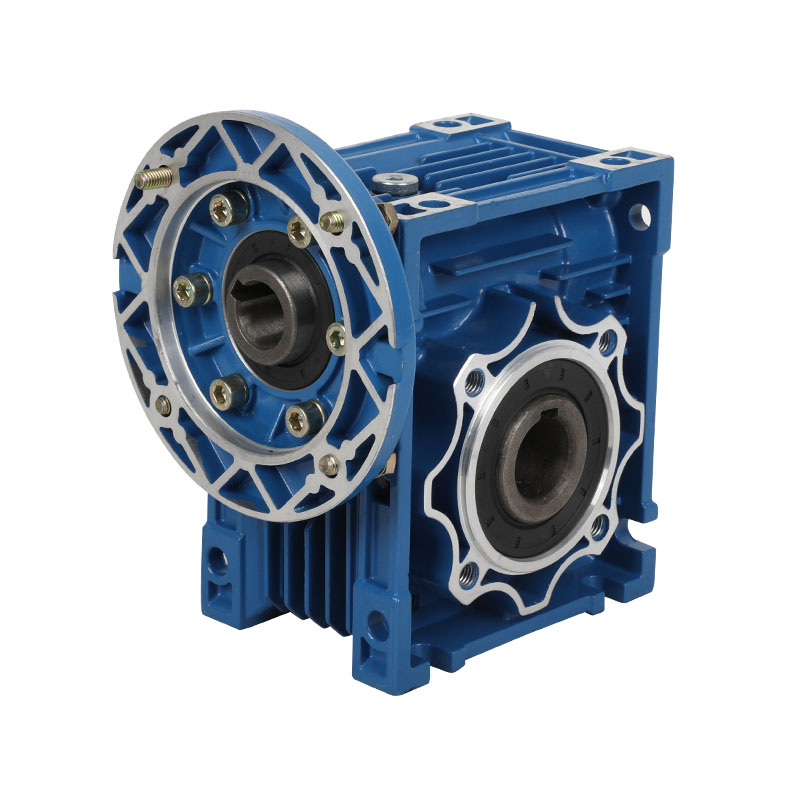Yes, the efficiency and energy loss of an RV worm gear reducer are closely tied to both load and speed. Here’s how these factors influence the performance:
Worm gear reducers generally operate more efficiently under higher loads. When the load increases, the worm gear experiences greater contact between the worm and the gear wheel, which reduces relative sliding motion and friction. This results in improved power transmission efficiency.
Under light or no load, the sliding friction between the worm and gear wheel is proportionally more significant, leading to higher energy losses. The gear system spends more energy overcoming friction than actually transmitting useful power, reducing efficiency.
Each RV worm gear reducer has an optimal load range where efficiency is maximized. Operating below or above this range leads to increased energy losses, either through excessive friction at low loads or through mechanical stress at excessively high loads.
As the operating speed of the worm gear increases, the sliding motion between the worm and the gear becomes smoother, reducing friction and heat buildup. At higher speeds, the worm's rotational motion more effectively drives the gear, leading to better efficiency. Typically, higher speeds result in lower energy loss, especially when combined with proper lubrication.
At lower speeds, more sliding occurs between the worm and the gear wheel because the surfaces move more slowly across each other, generating more friction. This leads to heat generation and higher energy losses, reducing the overall efficiency. Low-speed applications tend to suffer from these friction-related losses.The gear ratio also plays a role in the impact of speed on efficiency. In general, a higher reduction ratio means that the worm gear system operates more slowly, exacerbating the energy loss problem at lower speeds.
This combination typically yields maximum efficiency for worm gear reducers. The gear system benefits from reduced sliding friction, smoother operation, and better power transfer. However, it’s important to ensure that the gear’s design can handle the load and speed without excessive wear or overheating.
This scenario leads to maximum energy loss because the gear system is unable to overcome the inherent sliding friction effectively. The frictional forces dominate over the actual power transmission, resulting in poor efficiency and increased heat generation.
The key to maximizing efficiency and minimizing energy loss is operating the RV worm gear reducer within its designed load and speed specifications. Operating it too far outside these parameters—such as running a high-load reducer at low speeds or a low-load reducer at high speeds—can lead to significant performance inefficiencies.
Sliding friction is the main source of energy loss in worm gear reducers. Under low load and low speed, this friction dominates, resulting in substantial energy losses.The friction at both low load and low speed conditions generates excess heat, which further reduces efficiency. High-speed operation with proper lubrication dissipates heat more effectively, leading to lower energy losses.
The choice of lubrication also interacts with load and speed. High speeds can benefit from more fluid lubrication, while low-speed operations may suffer if the lubricant is too thick, increasing drag.
Yes, load and speed significantly affect the efficiency and energy loss of an RV worm gear reducer. Higher loads and higher speeds generally result in better efficiency, while lower loads and slower speeds lead to greater energy loss due to sliding friction and heat generation. Proper operation within optimal load and speed parameters is crucial for minimizing energy losses and maximizing performance.


 English
English русский
русский bahasa Indonesia
bahasa Indonesia
